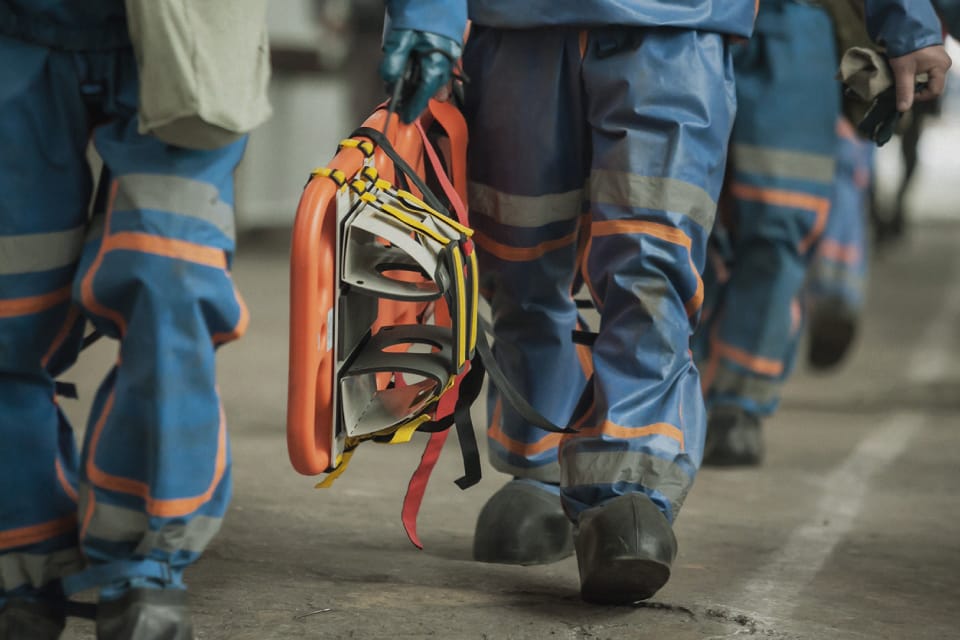
Holiday Bonus Episode: Safety Tips You Need This Season | Risk Matrix Episode 122
THE RISK MATRIX Cutting-edge podcast on occupational safety and risk management. Hosted by industry titans: JAMES JUNKIN, MS, CSP, MSP,…

The differences between an accident vs incident are subtle but crucial to grasp if you want to generate accurate reports, remain compliant, and foster a strong safety culture. Most regulatory bodies around the globe define accidents and incidents in their own way but all have similar undertones. When OSHA defines accident vs incident, they define them as follows:
“An accident is an unforeseen and unplanned event or circumstance. An incident is something that occurs during work where no personal injury or illness is caused”.
Accidents tend to be characterized by unexpected, undesirable events resulting in harm. Incidents include a broader spectrum, ranging from accidents to near misses and unsafe conditions.
Think of it this way: An accident is a type of incident. But not all incidents are accidents. And getting it right in your reports is critical and this article will help you learn the difference.
The difference between an accident vs incident can be broken down into 5 key areas:
The first thing you must evaluate is the outcome of the event. In occupational safety, accidents are often serious AND preventable.
On the other hand, an incident, in the context of safety, is always unwanted and unplanned.
Can an incident be a precursor to an accident? Some industry experts classify an incident precursor as a “near-miss”. It’s a minor incident that could have been an accident had one or two additional safeguards failed. And when it comes to incidents that cause injury, what makes an injury or illness “serious” enough to be classified as an accident?
Occupational Health and Safety regulatory bodies around the globe require companies to report accidents and incidents. But some businesses may have different opinions when it comes to defining what makes an injury serious. In the U.S., to keep things simple and consistent, many companies use the OSHA reporting policies as their guide. An incident with a serious safety and health outcome must be reported within 24 hours, which triggers a site visit and investigation.
Reportable incidents include:
In addition, OSHA requires some outcomes to be recorded in a log. This can be reviewed during an investigation or audit.
Recordable incidents include:
Foreseeability refers to the predictability of an accident. The job of the safety team, perhaps the EHS Manager or Safety Officer, is to foresee a potential accident and put steps in place to prevent it. Since accidents are deemed preventable and foreseeable, they should technically never happen. But they do. The key is being as proactive as possible by identifying safety hazards and potential risks, and having strong communication practices in place to ensure workers are aware. However, to be proactive you need data.
Regularly analyzing incident reports gives companies the ability to have a >
Everyone can agree on at least one thing when it comes to comparing an accident vs incident: They both cost companies money. Injuries can result in medical expenses, loss of production, and time, and run the risk of project delays. Even incidents that do not cause injuries, such as a near-miss, can cause psychological harm to workers. They may feel unsafe or that the company is not putting the proper steps in place to prevent an accident. Psychological consequences may include high employee turnover and missed days.
Reputational damage is a real factor to consider when it comes to the fallout of a major incident. Even if a contractor or subcontractor is responsible for the incident, the hiring company still faces reputational damage. This tends to be more common for incidents that result in a fatality or an environmental crisis. Accidents tend to draw significant attention, while incidents may not receive the same level of immediate attention.
Accidents often involve a more straightforward cause-and-effect relationship, where a specific action or event directly leads to harm or damage. On the other hand, incidents may entail a more intricate web of causation, involving several factors.
Think of it like a puzzle. An accident might be like fitting a handful of pieces together, while incidents are like dealing with 500 pieces to put together, without a picture to follow. So when we consider causation complexity, we acknowledge that incidents are often the result of several factors, each playing a role in the root cause.
By analyzing incident reports, companies can identify areas or processes that pose a risk to worker safety and take proactive measures to mitigate those risks. Reports also provide valuable insights and data that can be leveraged by safety teams to develop programs and training to improve workplace safety for all.
Furthermore, comprehensive reporting fosters a culture of transparency and continuous learning, while encouraging employees to report safety concerns and near-miss events.
Veriforce can provide the expertise to help you with incident reporting and help you turn a challenging event into a learning opportunity for your organization.
Contact us today to learn more.


THE RISK MATRIX Cutting-edge podcast on occupational safety and risk management. Hosted by industry titans: JAMES JUNKIN, MS, CSP, MSP,…

THE RISK MATRIX Cutting-edge podcast on occupational safety and risk management. Hosted by industry titans: JAMES JUNKIN, MS, CSP, MSP,…
We’ll send you practical and insightful supply chain risk management info that can benefit your business. Plus, important company updates that keep you in the loop.
